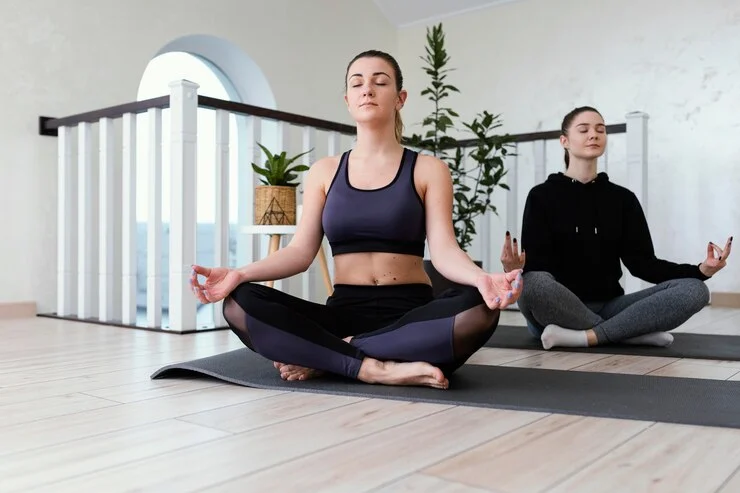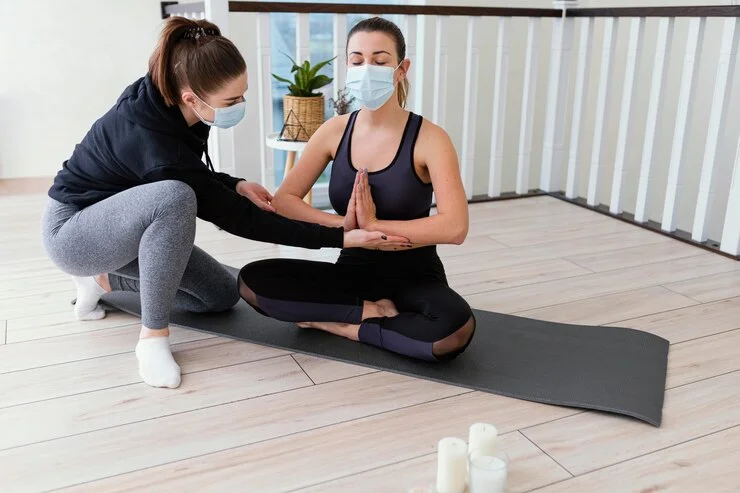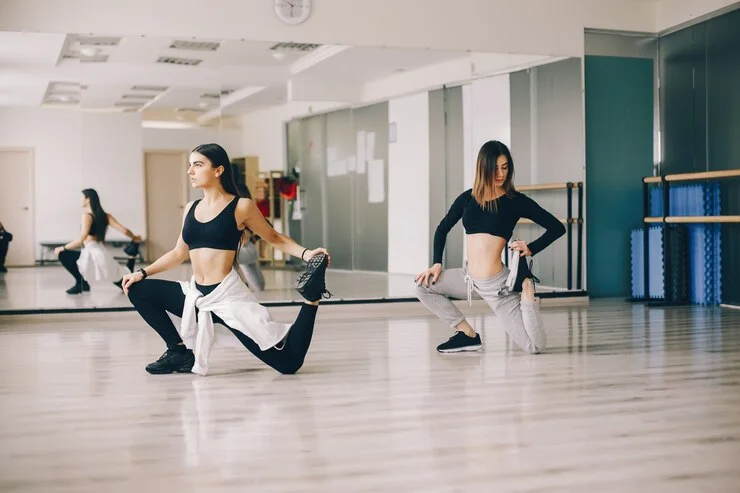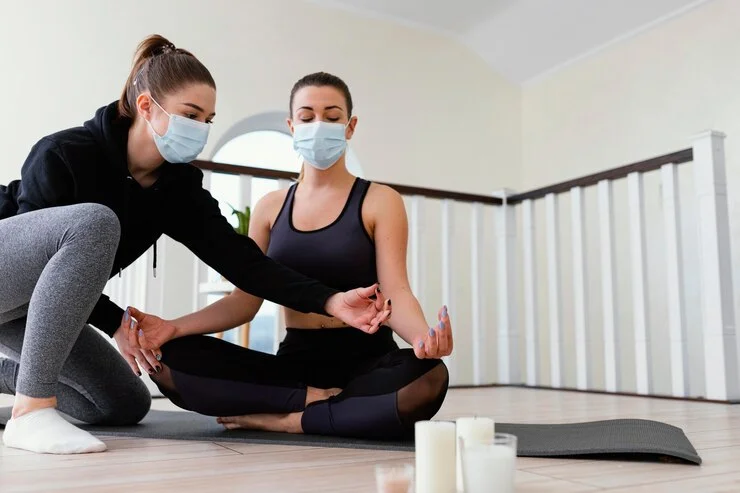How to Become a Yoga Instructor
Introduction
Yoga, an ancient practice rooted in over 5,000 years of Indian philosophy, has seen a remarkable surge in global popularity over the last few decades. This surge is not just among those seeking physical well-being but also among individuals looking to enhance their mental and spiritual health. The role of a yoga instructor in this journey is both profound and transformative, offering a path that is as enriching for the teacher as it is for the student.
Becoming a yoga instructor is more than just mastering poses or asanas. It involves embracing yoga’s holistic philosophy, which includes practices for mental clarity, emotional balance, and spiritual growth. This career provides a unique opportunity to inspire and guide others on their yoga journey, creating a positive impact on their health and overall well-being.
For those who are interested in pursuing a career in yoga teaching, it is crucial to comprehend what the journey entails. This journey involves developing a personal practice, acquiring the necessary qualifications, and navigating the professional landscape of yoga teaching. Becoming a yoga instructor is a lifelong commitment to learning and growth.
In this blog, we’ll explore the steps you need to take to embark on this rewarding career. We’ll delve into the importance of understanding yoga’s roots, preparing yourself personally, obtaining the right qualifications and training, gaining practical experience, and finally, establishing yourself within the yoga community. Whether you’re just starting to explore the idea of teaching yoga or you’re ready to take the next steps, this guide is designed to provide you with a comprehensive overview of the journey ahead.
This introduction sets the stage for an in-depth exploration of becoming a yoga instructor, emphasizing the depth of commitment and the holistic nature of the journey. Next, we’ll delve into the origins of yoga and the importance of finding your niche within its diverse practices.

Understanding Yoga and Its Roots
Yoga’s origins can be traced back to ancient India, where it was developed as a comprehensive system for physical, mental, and spiritual well-being. Rooted in the Sanskrit word “Yuj,” which means to yoke or unite, yoga aims to harmonize the body with the mind and breath through various practices, including asanas (postures), meditation, and pranayama (breath control).
Historically, yoga was more than just a series of exercises; it was a way of life that encompassed ethical precepts, dietary guidelines, and meditative practices, leading to spiritual enlightenment. Over centuries, yoga has evolved and branched into various styles, each with its focus and methodology. Some of the most popular styles today include Hatha Yoga, known for its emphasis on physical postures; Vinyasa Yoga, characterized by fluid movement linked with breath; Iyengar Yoga, which focuses on alignment and precision; and Kundalini Yoga, aimed at awakening spiritual energy.
As a prospective yoga instructor, it’s crucial to explore these different styles and find the one that resonates most with you. This exploration is not just about personal preference but also about discovering where you can best contribute your unique strengths and passions. Whether you’re drawn to the physicality of Ashtanga Yoga or the healing aspects of Restorative Yoga, your chosen niche will not only guide your training but also define your teaching career.
Understanding yoga’s rich history and diverse practices is foundational for any yoga teacher. This knowledge not only enriches your practice but also enables you to teach with authenticity and depth. As you embark on this journey, remember that becoming a yoga instructor is as much about personal transformation as it is about professional qualification.

Personal Preparation
Personal preparation is crucial before pursuing formal yoga instruction. Beyond physical fitness, it involves developing a deep private practice and understanding yoga’s principles and philosophies.
Developing a Consistent Personal Practice
Consistent personal practice is the cornerstone of your journey as a yoga instructor. It is through your practice that you’ll gain the depth of experience necessary to guide others. This doesn’t mean you need to master every pose or practice for hours each day. Instead, it’s about integrating yoga into your daily life, exploring various asanas, pranayama techniques, and meditation, and understanding how these practices affect your body, mind, and spirit.
A personal practice also offers a space for self-discovery and reflection, allowing you to experience firsthand the transformative power of yoga. It’s important to approach your practice with patience and curiosity, allowing yourself to grow and evolve naturally over time.
The Importance of Self-Awareness and Continuous Learning
Becoming a yoga instructor requires a high level of self-awareness. This means being mindful of your own body, recognizing your strengths and limitations, and understanding your motivations for teaching yoga. It also involves being open to feedback and willing to learn and adapt your practice continually.
Continuous learning can take many forms, from attending workshops and retreats to reading books and engaging with the yoga community. This ongoing education is crucial for deepening your knowledge and staying updated on teaching methodologies and yoga philosophies.
Your journey in yoga is what ultimately shapes your teaching style and philosophy. By dedicating yourself to personal practice and continuous learning, you lay a strong foundation for your development as a yoga instructor.
The journey to becoming a yoga instructor is deeply personal and requires a commitment to your growth and practice. Next, we’ll delve into the qualifications and training needed to teach yoga professionally.

Qualifications and Training
Embarking on the path to becoming a yoga instructor involves obtaining the necessary qualifications and training. This section outlines the steps and considerations for choosing the right yoga teacher training program (YTT), which is a pivotal part of your journey.
Overview of Yoga Teacher Training Programs
Yoga teacher training programs are designed to equip aspiring instructors with the knowledge, skills, and confidence needed to teach yoga effectively. The most common certifications include the 200-hour, 300-hour, and 500-hour courses, which refer to the total number of training hours. A 200-hour certification is the minimum requirement for teaching yoga, while 300-hour and 500-hour programs offer advanced training and deeper knowledge.
200 Hour Certification
The 200-hour YTT is the starting point for most yoga teachers. It covers the fundamentals of yoga philosophy, anatomy, teaching methodology, and practice. This program is designed to provide a comprehensive introduction to teaching yoga, preparing you to lead beginner and intermediate classes.
300-Hour and 500-Hour Certifications
For those looking to deepen their expertise, 300-hour and 500-hour YTTs offer advanced training. These programs build on the 200-hour certification, covering more complex asanas, advanced teaching techniques, and a deeper exploration of yoga’s philosophical aspects. Many teachers opt for these advanced certifications to specialize in certain styles of yoga or to enhance their teaching skills.
Choosing the Right Yoga Teacher Training Program
Selecting the right YTT is crucial for your development as a yoga instructor. Here are some factors to consider:
- Accreditation: Ensure the program is accredited by a recognized organization, such as Yoga Alliance. Accreditation ensures the program meets certain educational standards.
- Curriculum: Look for a program that offers a well-rounded curriculum, including yoga philosophy, anatomy, teaching methodology, and hands-on practice. The curriculum should align with your interests and goals as an aspiring yoga teacher.
- Instructors: Research the qualifications and experience of the instructors leading the program. Experienced instructors can provide valuable insights and guidance throughout your training.
- Format: Decide whether an in-person or online program best suits your learning style and schedule. While in-person programs offer direct interaction and immediate feedback, online programs provide flexibility and convenience.
How to Choose the Right Yoga Teacher Training Program

When choosing a YTT program, consider the following steps:
- Research: Start by researching various programs, reading reviews, and talking to past students to gain insights into their experiences.
- Reflect: Consider your personal and professional goals in yoga. What style of yoga do you want to teach? What are your long-term career aspirations?
- Visit: If possible, visit the schools or studios offering the training. This can give you a feel for the environment and whether it aligns with your values and learning style.
- Budget: Consider the cost of the program, including tuition, materials, and any additional expenses. Some programs offer scholarships or payment plans to help manage the cost.
Completing a yoga teacher training program is a significant investment in your future as a yoga instructor. It’s not just about obtaining a certification; it’s about deepening your understanding of yoga and developing the skills to share its benefits with others.
After Completing Your Training
Upon completing your YTT, you may choose to register with Yoga Alliance or a similar organization. While not mandatory, registration can enhance your credibility and provide access to continuing education and networking opportunities.
The journey from yoga student to instructor is both challenging and rewarding. With the right preparation, training, and mindset, you can transform your passion for yoga into a fulfilling career.
This section has outlined the steps for obtaining the necessary qualifications and training to become a yoga instructor. Next, we’ll explore registration, professional development, and building your brand in the yoga community.
Registration and Professional Development
After completing your yoga teacher training (YTT), the next steps involve registration and commitment to ongoing professional development. These are essential for advancing your career, enhancing your teaching skills, and staying connected with the global yoga community.
Registering with Yoga Alliance
Yoga Alliance (YA) is an internationally recognized organization that sets standards for yoga professionals and training programs. While registration is not legally required to teach yoga, becoming a Registered Yoga Teacher (RYT) with YA can enhance your credibility, making it easier to find employment and attract students. To register, you must have completed a YTT program from a Yoga Alliance-registered school. Registration offers benefits such as access to online workshops, teaching resources, and a profile on the YA directory.
Professional Development
The journey of a yoga instructor is one of continuous learning and growth. Engaging in professional development helps you stay updated on the latest yoga practices, teaching methodologies, and wellness trends. It includes:
- Advanced Certifications: Pursuing advanced certifications or specializations, such as prenatal yoga, yoga for seniors, or therapeutic yoga, can diversify your teaching repertoire and open new opportunities.
- Workshops and Seminars: Participating in workshops and seminars provides insights into specific aspects of yoga, deepens your practice, and enhances your teaching skills.
- Conferences and Retreats: Attending yoga conferences and retreats allows you to connect with other yoga professionals, share experiences, and learn from leading practitioners in the field.
- Self-Study: Continuous self-study through books, online courses, and practice is vital for personal and professional growth.
Building a Personal Brand
As a yoga instructor, creating a personal brand can help you stand out in a competitive market. This involves defining your teaching philosophy, identifying your target audience, and establishing a presence online and in your local community. Social media, a professional website, and networking can all play a role in building your brand and attracting students.
By focusing on professional development and building your brand, you lay the groundwork for a successful and fulfilling career as a yoga instructor. These efforts not only enhance your skills and knowledge but also help you make a meaningful impact on your students’ lives.
Next, we will explore practical experience—how to gain teaching experience and tips for teaching your first class.
Practical Experience
Gaining practical teaching experience is a critical step in transitioning from a yoga teacher trainee to a confident yoga instructor. This experience allows you to apply what you’ve learned in training, develop your unique teaching style, and build confidence in leading classes.
Gaining Teaching Experience
Here are some effective ways to gain valuable teaching experience:
- Volunteer Teaching: Offering free classes in community centers, schools, or non-profit organizations can provide you with the opportunity to teach diverse groups of students and refine your teaching skills in a low-pressure environment.
- Internships or Apprenticeships: Some yoga studios offer internship or apprenticeship programs for new teachers. These programs often provide the opportunity to assist experienced instructors, receive mentorship, and gradually take on more teaching responsibilities.
- Teaching Friends and Family: Starting by teaching yoga to friends and family can be a comfortable way to practice your teaching skills, receive honest feedback, and adjust your teaching methods.
- Substitute Teaching: Substituting for established yoga teachers at local studios or gyms is a great way to gain exposure, experience different class settings, and connect with potential students.
Tips for Teaching Your First Class
Teaching your first yoga class can be both exhilarating and nerve-wracking. Here are some tips to help you prepare and succeed:
- Plan Your Class: While it’s important to be flexible, having a class plan can help you feel more confident and ensure a smooth flow during the session.
- Know Your Audience: Understand the level and expectations of your students to tailor your class accordingly. This may involve adjusting poses, pace, and the focus of the class.
- Practice Clear Communication: Effective communication is key to a successful class. Practice giving clear, concise instructions and using positive language.
- Stay Present: Focus on your students and their experience during the class. Be observant and ready to offer modifications, encouragement, and support.
- Reflect and Learn: After the class, reflect on what went well and what could be improved. Seek feedback from your students and use it as a learning opportunity.
Gaining practical experience through teaching is an invaluable part of becoming a yoga instructor. It not only helps you hone your teaching skills but also builds your confidence and connection with students.
Next, we will explore finding employment and career opportunities as a yoga instructor, including working in studios, starting your own business, and leveraging online platforms.
Finding Employment and Career Opportunities
As a newly certified yoga instructor, navigating the job market and exploring career opportunities is the next step in your professional journey. The yoga industry offers a variety of pathways, from teaching at studios and gyms to starting your own business or embracing the digital world of online classes. Here’s how to approach finding employment and carving out your career in yoga.

Working in Yoga Studios and Gyms
Yoga studios and gyms are traditional settings for yoga instructors to begin their teaching careers. These venues allow you to teach students face-to-face, build a local following, and become part of a community. To secure a position, consider the following steps:
- Build a Strong Resume: Highlight your YTT certification, any specialized training, and relevant teaching experience. Include volunteer work and internships, as these demonstrate your commitment and passion for yoga.
- Network: Attend classes, workshops, and events at local studios and gyms to meet other instructors and studio owners. Networking can lead to job leads and valuable relationships in the yoga community.
- Apply Thoughtfully: Tailor your applications to each studio or gym, showing how you align with their philosophy and what you can bring to their team. Be prepared to audition by teaching a class to demonstrate your skills and teaching style.
Starting Your Own Yoga Business
For those with an entrepreneurial spirit, starting your own yoga business offers independence and the chance to create a unique yoga experience. This could involve opening a studio, organizing retreats, or offering private sessions. Key considerations include:
- Business Plan: Develop a detailed business plan outlining your vision, target market, services, pricing strategy, and marketing plan. This will serve as a roadmap for your business and can help secure funding if needed.
- Legal and Financial Matters: Understand the legal requirements for starting a business, including registration, insurance, and taxes. Setting up a solid foundation is crucial for long-term success.
- Marketing and Branding: Create a strong brand identity and use digital marketing strategies, such as a professional website, social media presence, and email marketing, to attract and retain clients.
Online Teaching Opportunities
The rise of digital technology has expanded the possibilities for teaching yoga online. This can complement in-studio teaching or become a primary career focus. Opportunities include:
- Live Online Classes: Platforms like Zoom or social media allow you to teach live classes to students worldwide. This approach maintains the interactivity of traditional courses in a virtual format.
- On-Demand Video Content: Creating pre-recorded yoga classes for platforms like YouTube or a personal website can generate passive income and reach a broad audience.
- Online Courses and Workshops: Offering specialized courses or workshops online can attract students interested in deepening their practice or exploring specific aspects of yoga.
Leveraging Social Media
Social media is a powerful tool for yoga instructors to showcase their practice, share insights, and connect with potential students. Platforms like Instagram, Facebook, and YouTube are ideal for building your brand, offering glimpses into your teaching style, and sharing valuable content that resonates with your audience.
The journey to becoming a successful yoga instructor involves continuous learning, adaptability, and the willingness to explore different avenues for teaching and sharing yoga. Whether you choose to teach in traditional settings, embark on an entrepreneurial path, or leverage online platforms, there are numerous opportunities to make a meaningful impact through yoga.
This section has explored the various employment and career opportunities available to yoga instructors. Next, we will discuss the importance of maintaining balance and wellness in your personal and professional life as a yoga instructor.
Conclusion
Embarking on the journey to become a yoga instructor is a profound commitment to personal growth, learning, and sharing the transformative power of yoga with others. It’s a path that offers immense rewards, including the opportunity to make a positive impact on the lives of your students while also challenging you to deepen your practice and understanding of yoga.
As we’ve explored, becoming a yoga instructor involves much more than mastering asanas; it requires dedication to personal preparation, obtaining the right qualifications and training, gaining practical teaching experience, and navigating the professional yoga landscape. Along the way, maintaining balance and wellness in your own life is crucial to sustaining your passion and ability to teach effectively.
Remember, the journey of a yoga instructor is as much about the internal exploration and personal transformation you’ll experience as it is about the knowledge and skills you’ll share with your students. Embrace each step of this journey with openness, curiosity, and a willingness to evolve, and you’ll find that teaching yoga can be one of the most rewarding experiences of your life.
As you continue on your journey, always keep the essence of yoga with you – a practice centered around unity, mindfulness, and compassion. Allow these principles to guide you in both your teaching and your personal life, and you will not only become a great yoga instructor but also embody the transformative power of yoga.
We wish you all the best on your journey to becoming a yoga instructor and hope that it brings you growth, inspiration, and joy.
FAQs
1. What is the duration required to become a certified yoga instructor?
The duration to become a certified yoga instructor varies depending on the program you choose. A standard 200-hour yoga teacher training (YTT) program, which is the minimum requirement for most teaching positions, typically takes anywhere from 3 weeks to 6 months to complete, depending on the intensity and format of the program (intensive courses vs. weekend modules). Advanced certifications, such as 300-hour and 500-hour programs, require additional time and can be completed over several months to a year or more.
2. Do I need to be registered with Yoga Alliance to teach yoga?
While registration with Yoga Alliance (YA) is not legally required to teach yoga, it is highly recommended. Being a Registered Yoga Teacher (RYT) with Yoga Alliance can enhance your credibility, make you more attractive to employers, and provide access to continuous education resources. It also assures students and studios that you have completed a training program that meets certain standards.
3. Can I teach yoga if I’m not flexible?
Yes, you can teach yoga even if you’re not highly flexible. Yoga is about much more than physical flexibility; it’s about creating balance, strength, and harmony in both the body and mind. As an instructor, your role is to guide your students through their practice, offering modifications and support as needed. Your understanding of yoga principles, ability to create a safe and inclusive environment, and capacity to connect with your students are far more important than your flexibility.
4. What is the difference between a 200-hour and a 500-hour yoga teacher training program?
A 200-hour yoga teacher training program is designed to provide you with the foundational skills and knowledge needed to begin teaching yoga. It covers basic yoga philosophy, anatomy, teaching methodology, and practice. A 500-hour program is more advanced and includes a 200-hour curriculum plus an additional 300 hours of training. The advanced program delves deeper into yoga philosophies, teaching techniques, and specialized areas of practice, preparing you for more advanced teaching roles and technical instruction.
5. How much can I expect to earn as a yoga instructor?
The income of a yoga instructor can vary widely based on several factors, including location, experience, the type of employment (working in a studio vs. self-employed), and the number of classes taught. Instructors working in urban areas or high-demand locations often earn more. On average, yoga instructors can expect to make anywhere from $25 to $75 per class in a studio setting. Private sessions can range significantly higher, from $50 to $150 per hour or more. Full-time instructors with a strong client base and additional revenue streams (such as workshops, retreats, and online classes) can earn a more substantial income.







